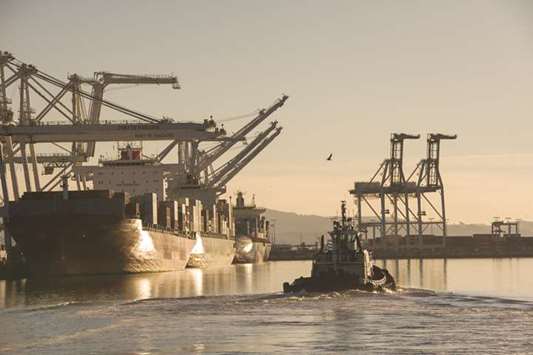US producer prices increased slightly more than expected in June amid gains in the cost of services and motor vehicles, leading to the biggest annual increase in 6-1/2 years. The report published by the Labor Department yesterday also showed a pickup in underlying producer inflation last month.
The data supports views of steadily rising price pressures, which will probably allow the Federal Reserve to increase interest rates two more times this year. Tariffs imposed by the Trump administration on imports of lumber, steel and aluminium pushed up prices last month.
“Tariffs are negative for economic growth but they are also inflationary,” said John Ryding, chief economist at RDQ Economics in New York. “We expect these price pressures will flow through into higher core inflation at the consumer level as the year unfolds.”
The producer price index for final demand climbed 0.3% last month after rising 0.5% in May.
In the 12 months through June, the PPI advanced 3.4%, the largest gain since November 2011.
Producer prices increased 3.1% year-on-year in May.
Economists polled by Reuters had forecast the PPI gaining 0.2% in June and rising 3.2% year-on-year.
A key gauge of underlying producer price pressures that excludes food, energy and trade services rose 0.3% last month.
The so-called core PPI edged up 0.1% in May.
In the 12 months through June, the core PPI advanced 2.7% after increasing 2.6% in May.
Manufacturers have been facing a rise in the cost of inputs, but so far have not passed on most of the increases to consumers.
Inflation is gradually rising against the backdrop of a labour market that is viewed as being near or at full employment.
The Fed’s preferred inflation measure, the personal consumption expenditures (PCE) price index excluding food and energy, hit the US central bank’s 2% target in May for the first time in six years.
The Fed raised interest rates in June for the second time this year and has forecast two more rate hikes by the end of 2018.
US financial markets were little moved by the data.
In June, the cost of services increased 0.4% after climbing 0.3% in May.
A 21.8% jump in the index for fuels and lubricants retailing accounted for about 40% of the rise in the cost of services last month. The cost of healthcare services rose 0.2% as a 1.0% surge in prices for hospital outpatient care offset slight declines in the cost of doctor visits and hospital inpatient care.
Healthcare prices nudged up 0.1% in May. Those healthcare costs feed into the core PCE price index. There were also increases in the cost of transporting goods by road, likely reflecting an acute shortage of truck drivers.
Truck transportation prices soared a record 1.3% in June. But wholesale prices of apparel and footwear fell as did the cost of airline tickets.
Prices for goods edged up 0.1% last month after surging 1.0% in May.
They were last month restrained by a 1.1% drop in food prices, which followed a 0.1% gain. Wholesale gasoline prices rose 0.5% after jumping 9.8% in May. Excluding foods and energy, goods prices climbed 0.3%, rising by the same margin for a sixth consecutive month.
Motor vehicle prices increased 0.4% in June, the biggest gain in seven months.
In a separate report on Wednesday, the Commerce Department said wholesale inventories increased 0.6% instead of the 0.5% gain it reported last month.
Stocks at wholesalers edged up 0.1% in April. They rose 5.9% year-on-year in May. The component of wholesale inventories that goes into the calculation of gross domestic product — wholesale stocks excluding autos — increased 0.8% in May.
Inventory investment was neutral to GDP growth in the first quarter. The economy grew at a 2.0% annualised pace during the January-March period. Sales at wholesalers accelerated 2.5% in May, the biggest increase since March 2011, after rising 1.4% in April.
At May’s sales pace it would take wholesalers 1.24 months to clear shelves, the lowest since November 2014, down from 1.27 months in April.

A tug boat heads out to retrieve a container ship at the Port of Oakland in California (file). US producer prices increased slightly more than expected in June amid gains in the cost of services and motor vehicles, leading to the biggest annual increase in 6-1/2 years.


